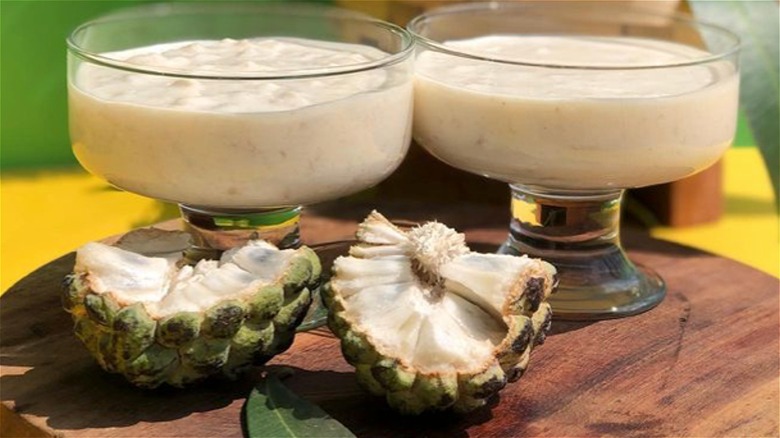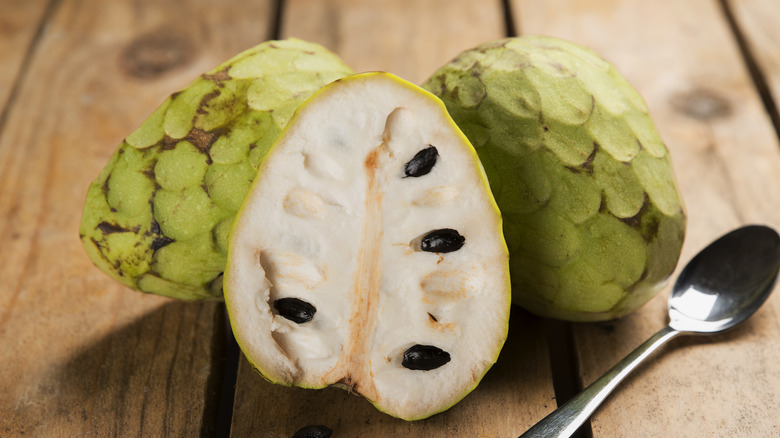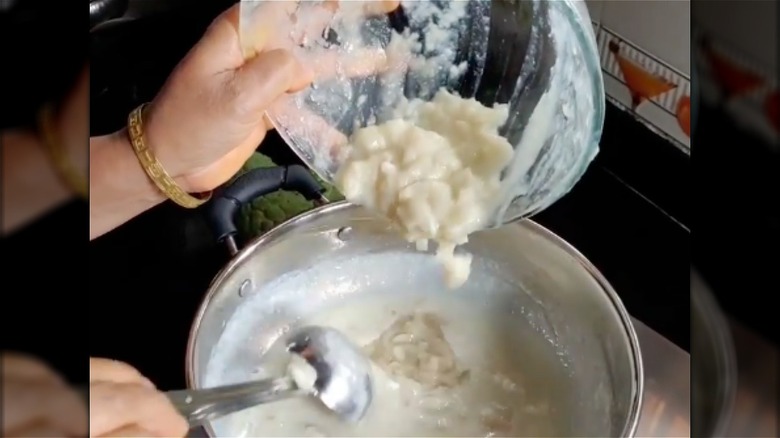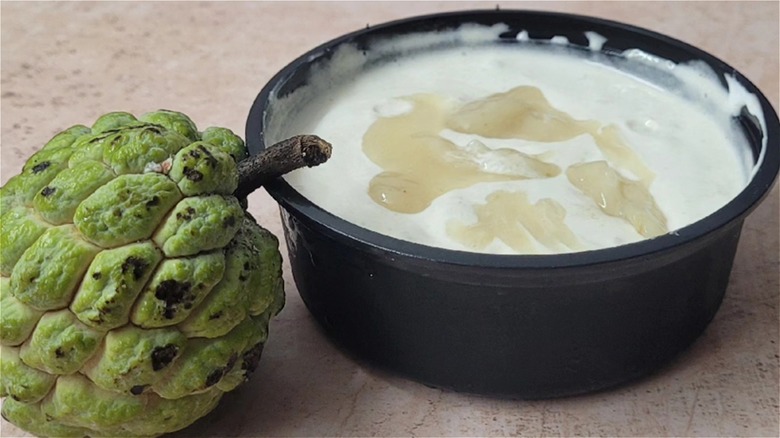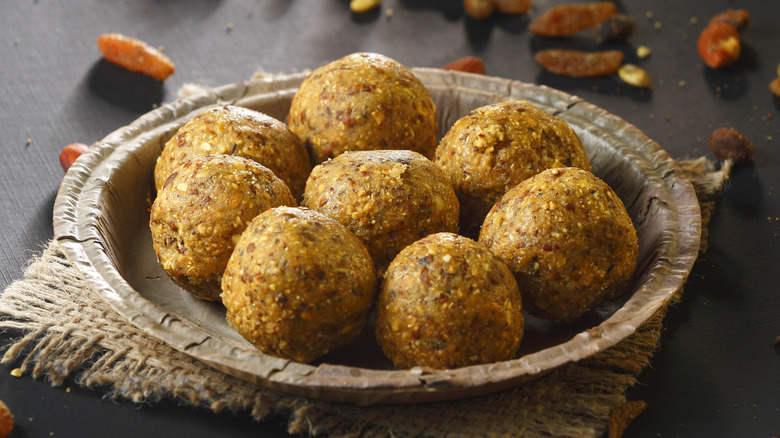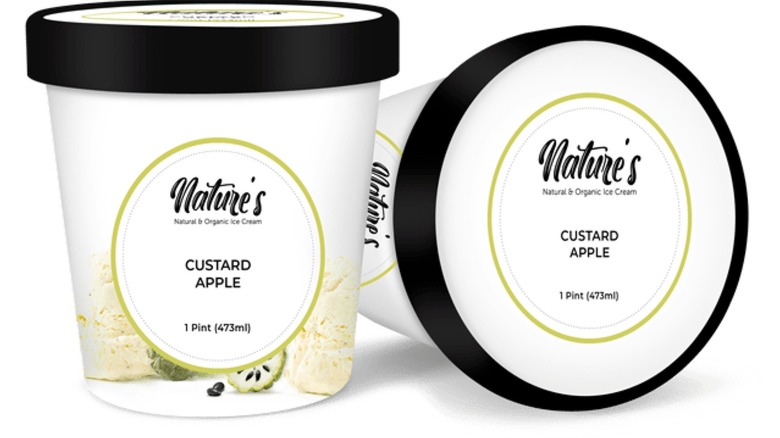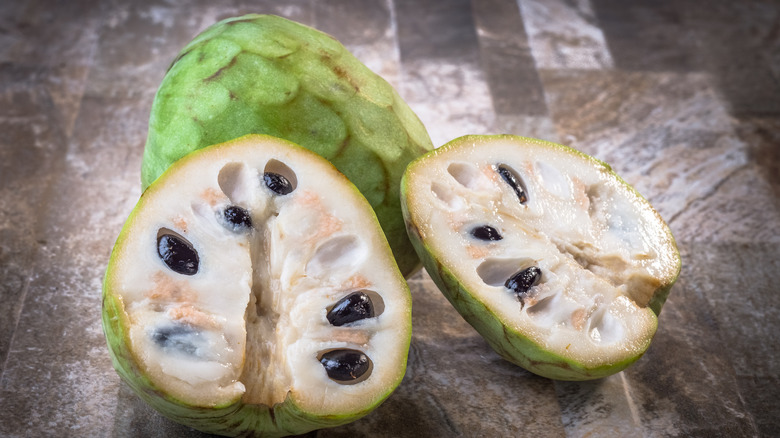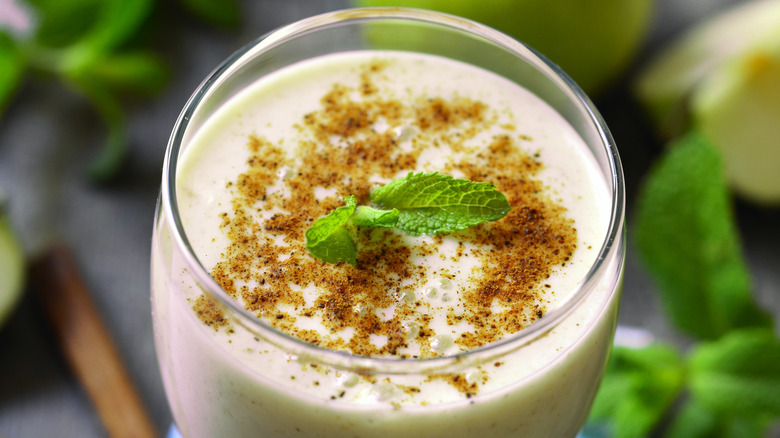What Is Sitaphal Cream And How Is It Made?
Long before the time of Vikings or Romans, in the Paleolithic era, it is believed that people first savored cream derived from milk. Its history is rich and extensive, and its adaptability transcends country lines, with influences spanning the globe. While creamy delights like Holland cream are synonymous with the Netherlands, there is also a remarkable variation deemed an Indian culinary treasure: Sitaphal cream.
Sitaphal cream, which also goes by the name Sitaphal Rabdi, is an Indian dessert whose rich and sweet flavor is balanced by a luxurious silky cream texture. Served at special occasions or festivals such as Diwali, this dessert is decadent and utterly moreish.
It's simple enough to make and can be created by combining two ingredients: custard apples and cream. Although the custard apples should be sweet enough to elevate the cream into a wondrous dessert, sometimes fine sugar is also added. There are also Sitaphal cream recipes that involve reducing the milk to cream yourself, but using pre-bought heavy cream will save time.
With a colorful history, a unique taste, and an enticing appearance, this is the next creamy delight to capture your heart and taste buds.
Sitaphal cream's history
Sitaphal cream is made with custard apples or cherimoya, which are native to Ecuador, Colombia, and Peru. Custard apples are scientifically referred to as Annona cherimola, which are members of the Annonaceae family, alongside other species such as alligator apples. Sitaphal is Hindi for custard apple but also goes by Seethapazham in Malayalam or Sharifa in Punjabi.
The custard apple's first reference to India appeared in 1672. However, they are believed to have been introduced for cultivation in 1880. There are two separate accounts for the origin of its name. The first is that the fruit was named after Sita, wife of Lord Rama, while another version is that the word "Sitaphal” in Sanskrit refers to "cold" (sheet) and "fruit" (phal), which refers to the cooling effect the fruit has on the body. Custard apples have a bumpy green skin that resembles fruity scales with an inside that is creamy ivory flesh dotted with hard black seeds. This flesh is supple and silky, similar to a custard consistency.
Originating in Northwestern India and Pakistan, desserts made from sweetened cream, like Rabdi, have mysterious ancient beginnings. Yet, one fact remains certain: they have become a culinary symbol of tradition and culture in Indian cuisine. When you blend this sweetened (or unsweetened) cream with custard apples, their colors mingle, resulting in the creation of Sitaphal cream, which adopts a splendid pale yellow hue. Sitaphal cream is typically presented in a bowl, making it convenient to scoop up all the sweet deliciousness.
How is Sitaphal cream made?
Sitaphal cream can use custard apple pulp or chunky pieces of flesh, although many recipes also use a combination of both, which then delivers various textures. The easiest way to achieve custard apple pulp is to peel the custard apple and mash the flesh through a sieve over a clean bowl. This allows you to get that pureed, thin texture and easily retrieve and discard any of the big black seeds within.
This pulp is then gently mixed with heavy or fresh cream and sugar. Generally, thin sugar-like confectionery is used as this will remove that grainy texture felt by larger granules. Other ingredients like vanilla extract, cardamon, or saffron can also be added during this step for additional flavors. All ingredients are well mixed before the cream is placed into the refrigerator to chill and set. Some recipes for Sitaphal cream will also incorporate vanilla ice cream before chilling. This would make a thicker Sitaphal dessert that's immensely creamy and sweet.
To serve, Sitaphal cream can be topped with a pinch of chopped nuts, cardamom powder, rose petals, or delicate slices of custard apple.
What does Sitaphal cream taste like?
If you've ever had the pleasure of tasting a custard apple, you will know how utterly unique and thrilling it is. Beyond the vibrant green skin lies a tantalizingly tender and velvety white flesh. When a ripe custard apple is split in two, you can detect delicate floral hints of vanilla and banana. The taste has been likened to a mixture of pineapple, banana, strawberries, and mangoes.
Once this glorious fruit is combined with cream, the smooth cream consistency becomes more pudding-like. Its texture is thick, and if the Sitaphal cream has incorporated chunks of custard apple, there are pockets of tender, juicy fruit that your spoon stumbles excitedly upon. This dessert can be exceptionally sweet, especially when sugar has been included, although it's generally held that the fruit's flavor takes precedence and should not be overshadowed by it.
This dessert is usually served chilled because, as you can imagine, the cream would only become thinner and warmer if left at room temperature. Adding garnishes like spices or nuts allows the Sitaphal cream to take on a crunchy texture contrast or subtle spiced aromas.
How to cook with Sitaphal cream
If one dessert wasn't enough, then you'll be pleased to hear that not only is Sitaphal cream brilliantly eaten with a few slices of custard apple topping, but also as an accompaniment to other desserts. Amaranth ladoos (or laddus) are sweet balls made from toffee sauce, sugar, butter, cream, and amaranth seeds. They can be served on top of Sitaphal cream for a dessert inspired by the Haji Ali area of Mumbai. It's delicious and filling.
It can also be served alongside badam ka halwa, which is a crumbly almond dessert made from ghee, milk, cardamon, and almonds. Imagine the wonderful nutty flavors of this dessert, beautifully complementing the creamy Sitaphal. The texture of the two desserts effortlessly melds together to form a deliciously clever and comforting dessert. This delightful pairing creates a symphony of flavors and textures that is sure to leave your taste buds enchanted and your heart content.
Where to buy Sitaphal cream
If you're looking to create Sitaphal cream at home, it's really not that difficult to source the ingredients you'll need. Custard apples grow in the Bahamas and southern Florida and are usually in season from late fall through to spring. During this period, you will likely find them at farmers' markets or specialty grocers. It's best to choose ripe custard apples, as these will have the most developed flavor. A custard apple is ripe when its exterior is soft to the touch, and the skin begins to brown.
Custard apples are best eaten 1-2 days after receiving them, and as a result, Sitaphal cream is best made fresh and eaten the same day. For this reason, it may be difficult to source premade Sitaphal cream. However, if you want to try similar flavors, you could always purchase a custard apple ice cream. Although the texture would be incomparable to Sitaphal cream, you would get an idea of the flavor profiles. Otherwise, you could look out for Sitaphal cream or Sitaphal Rabdi on menus at North Indian restaurants.
Nutritional benefits
Custard apples are nutritional powerhouses. Cherimoyas are bursting with anti-oxidants that have the power to fend off free radicals in the body. It may sound like a comic book, but free radicals can cause oxidative stress, which consequently is associated with chronic illnesses such as heart disease and lung cancer. They also have the potential to maintain healthy vision, prevent high blood pressure, and support healthy digestion.
While custard apples appear as an outline of health, you must be aware that they also contain a toxic compound called annonacin, which can affect the brain and nervous system. There are high levels of this toxin in the skin and seeds. As a result, these should be removed before eating.
The fruit is not the only source of nutrition in this dessert, as cream also contains minerals and vitamins. It is composed mainly of fats, which is why it is high in calories, but these fats are healthy when consumed in moderation.
Other Sitaphal cream variations
Sitaphal cream is also available in two other prominent forms: as a milkshake and as an ice cream. Sitaphal ice cream is fruity and creamy, with a slightly grainy texture. The methods of making Sitaphal ice cream are extensively varied; some will contain fresh custard apples, while others may use a Sitaphal powder instead. Some will include eggs, while others will use condensed milk. Although there is some speculation as to whether the flavor of custard apple in ice cream reduces the fruit's natural sweetness, this is a brilliant way to turn the flavors in Sitaphal cream into a refreshing treat that's perfect for hot days.
Sitaphal also makes an appearance in milkshakes. These combine milk, custard apples, and sugar to create a milkshake reminiscent of thin, fruity custard. Although there could be debate about how this falls into the category of cream, the combination of sweetened dairy with the custard apples does echo similar aromas to the cream, just in a lighter form.
If you're intrigued by the thought of Sitaphal cream, you're just a store visit away from crafting a batch of this irresistibly creamy and delectable dessert.
